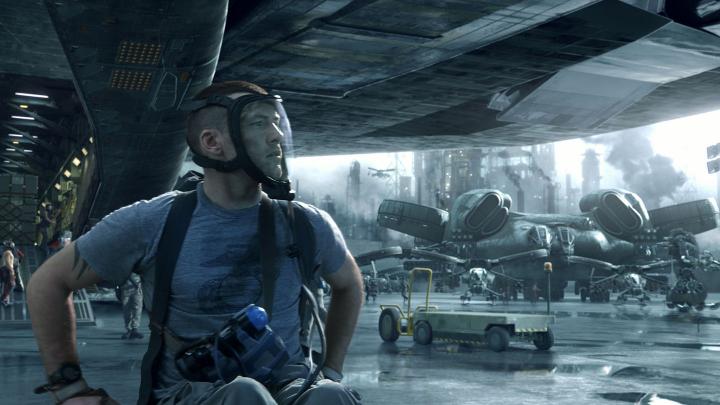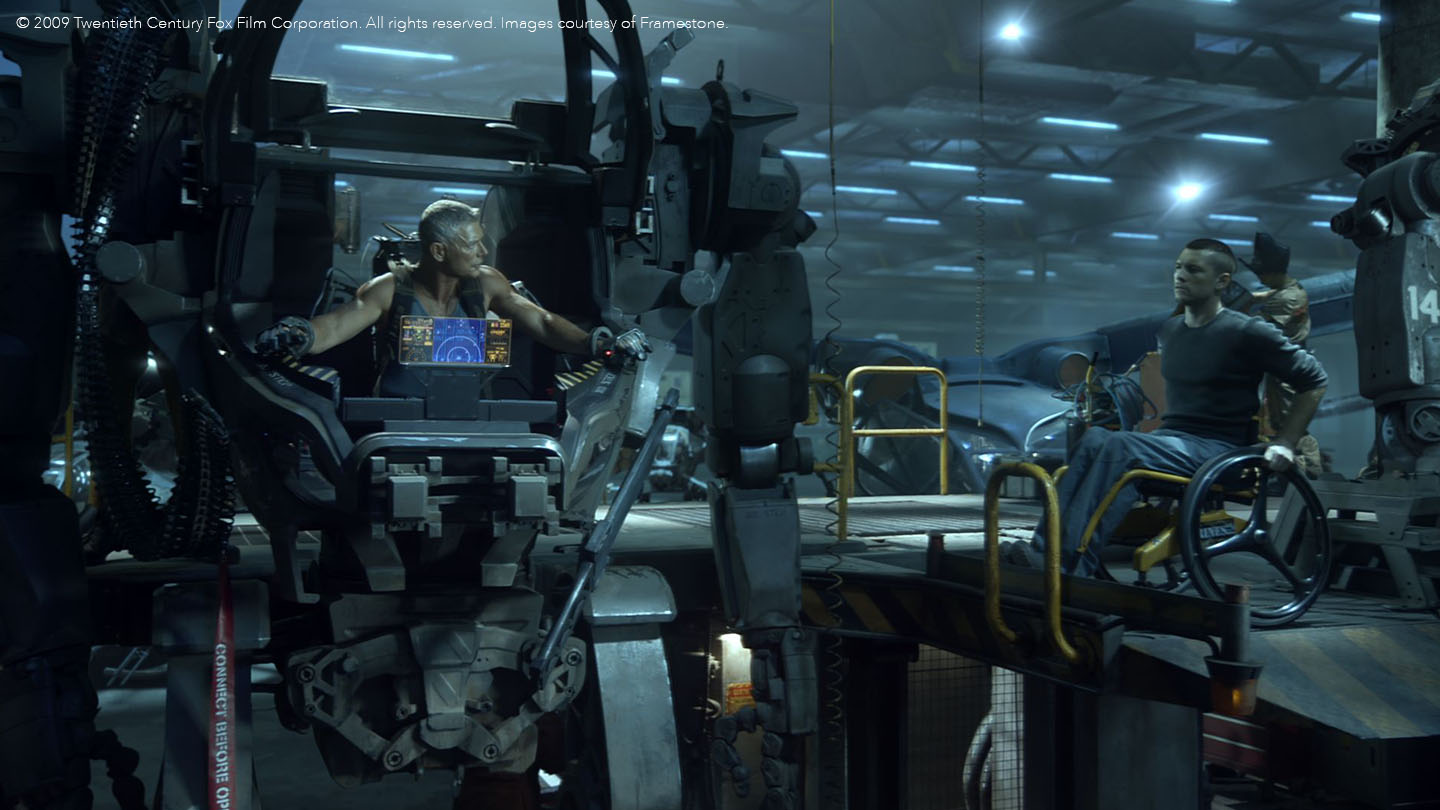Mari covers Avatar's models in glory
Box office record-breaking Avatar was a hugely challenging film to make with a staggering 2500 VFX shots that include both performance-capture characters and models of enormous scale.
Both had to remain convincing at a distance and in close-up. For many the most memorable sequences are those based in the incredible jungles of Pandora amongst the Na’vi and their settlement: the amazing Hometree.
The lead visual effects company was Weta Digital in Wellington, New Zealand whose shot count totaled 1812. At full tilt, the project required 900 people with up to 54 artists painting the 2.5 million textures required for the models. Lead Texture Artists David Abbott and Michael Cox describe some of the challenges that faced them: “Painting objects which were essentially sets that would be seen from very close up at multiple angles, in a variety of positions, and even interacting with the characters required a lot of high resolution texture maps and geometry.” David Abbott.
Textures played a critical role in creating a rich and varied set of assets. Using texture variations, the team was able to create 68 unique creatures from 23 hero models. For the Banshees there was only one hero geometry built, but there are 26 texture variants. Then there were the plants: 483 Hero Plant assets were built, but with geometry modifications and different textures that translated into 3,000 possible variations to use.

“As a sequence, nothing comes close to the floating mountains. Realizing these epic shots was an incredibly difficult, but rewarding experience that required 25 talented artists to bring it to life. Seeing these shots still sends shivers down my spine....” Michael Cox.
Before they could start, the first challenge facing the team at Weta Digital was to find a paint tool capable of handling the scale, detail and sheer volume of work needed to create James Cameron’s vision of Pandora.
Jack Greasley, senior R&D software engineer at Weta Digital recalls: “When Avatar production was just starting, Weta decided to do an evaluation of all of the available painting software ... they simply didn't scale up to the sort of detail Weta needed for Avatar. During Kong, they'd had to split models into small sections of four or five 4k patches to paint them. This resulted in 500 or more patches and was very difficult to manage. They then had to dice models up, paint, fix seams, rinse and repeat. Weta Digital’s need for a software solution that ran well on Linux, played nicely in the pipeline, and had a good UI, were other important considerations.”
The lack of an appropriate tool led Weta Digital to create something themselves - Mari®. The development was driven by the texture department’s requirement to handle the massively complex, highly detailed look development work demanded on Avatar. Mari was designed as a full 3D paint tool with the key objectives being responsiveness and a feature-set that put even the best, dedicated, 2D paint systems to shame. The name Mari comes from the Swahili Maridadi meaning ‘beautiful’ whilst also carrying connotations of 'usefulness'.
Before painting a character or asset, the texture team would look at reference material and concept art. For Avatar, the models were originally built in Maya and then integrity checked before importing into Mari. All the information required for the artists to texture paint was incorporated into that model. After painting, they would output all the UV tiles from Mari to then be used in the Weta shader system to be rendered with RenderMan.


Finished painting and shading assets were submitted to dailies where the Visual Effects Supervisor would either approve them for shots or give the team creative feedback that they could address. Often the director would have his own critiques that would also have to be taken into consideration.
“Almost every asset rendered by Weta for Avatar was painted to some extent in Mari. A typical character was around 150 to 170 patches, with 30 or more channels (specular, diffuse, sub-surface, etc) and 500k polygons at Sub-division level one. The full texture set ran to several tens of gigabytes, all of which could be loaded in Mari at the same time. The biggest asset I saw being painted was the shuttle, which came in at 30Gb per channel for the fine displacement detail (500, 4K textures). Assets of over 20M polys can be painted.” Jack Greasley commented.
Mari's ability to paint a vast number of UV patches onto high-resolution geometry was of great benefit during the painting of Pandora. Some of the environmental assets and creatures were immense in scale and subsequently needed an extremely high level of detail over much of their surfaces. Mari's ability to handle such large volumes of data, without compromising the performance of their tools, made painting these challenging Avatar assets possible.
Certain tools were particularly useful on Avatar. Paint Through was essential for taking an image and selectively painting sections from it onto the geometry on the fly, this proved to be a very fast way to get highly detailed textures onto the model quickly. Another of the great time saving features of Mari for the Avatar team was the ability to adjust or filter all the textures from many UV patches in one go. Mask channels were vital in controlling the spread of the paint and stopping it spilling beyond a particular angle on the model. The highly controllable lattice tool was also invaluable, allowing artists to distort an image into place, helping to match the texture more precisely to the model surface.
In Mari, you can paint to a level of detail never before attainable in other paint packages.
Michael Cox, Lead Texture Artist, Weta
The projection cameras were used extensively as an alternative to “baking in” textures from within Maya. Artists could set up cameras and project images of up to 16K onto the model to allow them to maintain a Photoshop to Mari workflow if they wanted to, though Photoshop is used rarely now.
“Mari is a one stop shop as far as texturing goes. It can handle a lot of data efficiently, so this makes our lives easier.” - David Abbott.
Having so many artists working on assets at the same time made collaboration critical. Michael Cox took advantage of Mari’s ability to create and share texture and brush “shelves”: “The power of this really comes into play when you are working with numerous artists on a task such as overseeing the painting of the trees. With Mari we were able to build up a library of tried and tested textures and brushes and save them out as a shelf which anyone starting an asset can load and utilize in their painting. Good shelves like this save an incredible amount of work when dealing with large numbers of similar assets.”
On such a complex project, previewing the models, as they will appear when finally rendered, is very important in saving time on paint-render-review cycles and therefore revisions after dailies. The use of the shader system in Mari was extremely useful in giving the artists an accurate idea of what their asset would look like when finally rendered. With elements like specular control, ambient occlusion, displacement preview and spherical harmonic lighting available as shading modules, artists could shade their assets more accurately and subsequently greatly reduced the amount of time that would normally be spent further down the pipeline.
That speed, and the ability to work on numerous texture maps at the same time allowed the texture artists to concentrate on the creative challenges of Avatar rather than be distracted by arbitrary technical limitations.
I have the freedom and flexibility to paint naturally and not be held back by the tools at hand.
Michael Cox, Lead Texture Artist, Weta
With Mari as their tool of choice, the artists at Weta Digital were able to create breathtaking models of immense detail.
“I am most proud of the giant bulldozer’s, particularly the medium distance shot where you can perceive the sheer scale, and the close-up of the bulldozers camera which clearly demonstrates the texture detail.” - David Abbott.
“As a single asset I would have to say I'm most proud of the Hometree. It has incredible detail on the surface of the bark that is only glimpsed at in the really close-up shots of the tree.” - Michael Cox.


